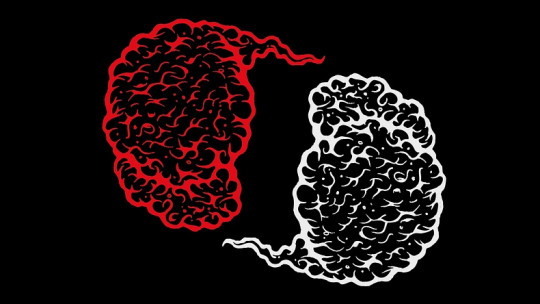
Attention deficit hyperactivity disorder (or ADHD) is a neurodevelopmental disorder that is diagnosed especially during childhood, with most of the scientific literature on the issue focusing on this age period.
Despite this, 85% of children with ADHD continue to maintain symptoms in adolescence, and 60% persist into adulthood (times in which certified cases increase in the female population, equalizing the ratio between the sexes).
Because childhood and adolescence are periods with specific evolutionary particularities, due to the maturational milestones that are inherent to them, It is of enormous interest to know the expression of ADHD in adolescence
In this article we will talk about what ADHD is and we will address the way in which it manifests itself at a clinical level, showing its evolution in the process that leads from childhood to adolescence (as well as the implications that may arise).
What is ADHD
ADHD is a neurodevelopmental disorder that expresses itself in the form of inattention and/or hyperactivity People who suffer from it may meet only one of the two symptoms, or meet the diagnostic criteria for both. We then proceed to describe the way in which both manifest themselves in childhood, going on to expose the face they usually adopt when crossing the threshold of adolescence.
Inattention
Inattention is usually easily detected when the child enters school. Teachers, and also parents themselves, may notice that the child does not concentrate enough time to finish their school activities successfully, ignoring necessary details or expressing boredom during their completion. Likewise, when his attention is demanded he responds in such a way that it seems he is not listening to what is being said to him, as if what he is thinking about absorbs all his cognitive resources.
There is also a peculiar difficulty following instructions and maintaining interest in activities that require sustained attentional focus Attention is easily dispersed by external stimuli that are not related to the task at hand, leading to frequent interruptions that lengthen obligations and reduce leisure time. They may also behave in a forgetful or absent-minded manner, neglecting their properties or losing them.
Hyperactivity
Hyperactivity appears as excessive behavioral activation in contrast to what would be expected in the objective situation in which the child participates. For example, he may fidget during the time he should be sitting, moving his arms or feet restlessly. He may also get up from his seat at inappropriate times or resort to annoying activities such as running around, humming, or even climbing; to satisfy an apparent need for movement.
In addition to motor activity, the child with ADHD may speak in a loquacious manner, interrupting others’ turns and uttering words at such a fast pace that it affects their ability to communicate Play behavior is also substantially affected, such that it is difficult for him to engage in shared activities while maintaining peace of mind. This circumstance may represent one of the first experiences of interpersonal rejection in childhood.
Other peculiarities
Diagnostic manuals (such as the DSM itself in its fifth edition) suggest that, to make the diagnosis of ADHD, the symptoms must present before the age of 12. Likewise, this must be extended to at least two contexts (home, school, etc.) and ostensibly interfere with the normal development of family or academic activities. It is also key to rule out the diagnosis of another possible mental health problem (such as childhood schizophrenia).
ADHD in adolescence
Despite the relevance of the issue, There are relatively few studies that have focused their focus on the clinical expression of ADHD in adolescence This stage of development is extremely important to strengthen extra-familial social ties, make decisions regarding the future, shape identity, discover sexuality and ultimately build the foundations on which the person will be built for the years to come.
Therefore, it is essential to know how ADHD could limit, or perhaps hinder, the successful acquisition of such relevant evolutionary milestones. Especially due to the fact that there is ample empirical evidence on the possible permanence of symptoms in this transition between both life periods, although subject to “transformation” as a result of the interaction between life experience, the demands of the environment and the effervescent maturation. of the central nervous system.
Access to information and communication technologies, managing the (sometimes contradictory) expectations of family and friends, and even the beginning of the first intimate relationships, can be compromised by the challenges that ADHD imposes on those suffers from it. It is also not uncommon for additional difficulties to occur in the area of mental health such as mood and anxiety disorders, which require specialized and independent care.
In the following lines we will delve into the specific way in which ADHD is expressed in adolescence. We will focus only on the most important complications that may arise, although it is necessary to emphasize that not all of them have to occur, and that We currently have effective therapeutic strategies aimed at alleviating its effects This text serves to guide detection and stimulate the search for effective solutions.
1. Impulsiveness
One of the most important obstacles to confirming the diagnosis of ADHD in adolescence is the fact that hyperactivity, the symptom that most easily allows us to infer the presence of the disorder during childhood, tends to soften as we enter this period. Thus, it can be replaced by impulsive behaviors, which are confused or camouflaged in the accumulation of expectations that society places on adolescents.
The prefrontal cortex It is a relatively recent anatomical region of the brain in evolutionary and phylogenetic terms. One of its most relevant functions is associated with the inhibition of impulses, as well as the tolerance of frustration. This area of the nervous system completes its maturation in the second decade of life, which is why many adolescents present deficits in these executive functions. The effect, however, may be even more pronounced in those with a diagnosis of ADHD.
There is evidence that ADHD in adolescence It can be expressed by a special difficulty in making decisions weighing possible future consequences, which ends up translating into greater erraticism when choosing curricular itineraries or job options. It is also very important to focus attention on other impulsive behaviors, due to the physical risk they entail, such as substance use or participation in risky sexual activities.
2. Difficulties in planning
ADHD in adolescence can manifest itself at a cognitive level, in addition to the aforementioned impulsivity, through specific difficulties in planning the future and drawing up action plans that direct behavior purposefully toward a goal In this sense, it is common for one’s responsibilities to be assumed bordering the time limit available for their realization, or for a sequence of steps to be followed without sufficient logic for the optimal development of the intention.
3. Unstable social relationships
Adolescents with ADHD may show interpersonal behavior battered by instability, in such a way that they abandon their relationships very easily. They are also often very impatient, which can result in constant interruptions to peers, parents and teachers. All of this, together with a possible tendency to “lose one’s temper”, contributes decisively to the appearance of conflicts in the family and academic context.
Rejection from social groups can occur with some frequency also in adolescence, prolonging a social problem whose germ could have sprung up in childhood itself, and consecutively attacking the way in which the person perceives themselves. Ostracism from the reference group, as another consequence of ignorance about essential mental health issues, facilitates the appearance of mood and anxiety problems in people with ADHD.
4. Difficulty maintaining attention
As academic demands increase, adolescents with ADHD may perceive their attentional capacities as overwhelmed and show difficulties in their performance. This fact is accentuated when faced with repetitive tasks, that require an excess of detail or that are considered tedious or uninteresting. For this reason, they can make various mistakes during their preparation, reaching a point where an explicit preference for leaving them unfinished is evident.
This difficulty in maintaining attention focus also extends to social relationships. During the communication process, the person with ADHD may feel distracted by thoughts unrelated to the conversation in progress, so that they perceive lack of ability to grasp the content of the messages and respond in a manner consistent with them. On some occasions, difficulties are observed in maintaining interest in a film, book or other audiovisual work; especially when you don’t have options to interact.
5. Work problems
Work life, like academic life, can also be compromised as a result of an ADHD diagnosis, especially in cases in which this is maintained upon reaching adulthood. There are studies that suggest a preference for jobs in which physical dimensions predominate, as opposed to those that require cognitive skills. Additionally, they may need help managing time and organizing the schedule of their work responsibilities.
As in social relationships, there may also be a tendency to abandon jobs when they exceed coping resources, or when they are considered unrewarding.
6. Mental health comorbidities
Adolescents with ADHD may present other mental health problems with additive effects to those of their neurodevelopmental disorder; and that they stand as a consequence of both its core symptoms and its consequences on social relationships, academic development, family life and self-image. The most common are anxiety disorders, major depression, and substance abuse or dependence
It is important to assume that ADHD can last until adolescence, in a way that often goes unnoticed, but that can seriously undermine the options for building a life full of meaning. Therefore, it is always advisable to consult with a mental health professional if you have doubts about the presence of this condition and/or the comorbidities that may accompany it.








